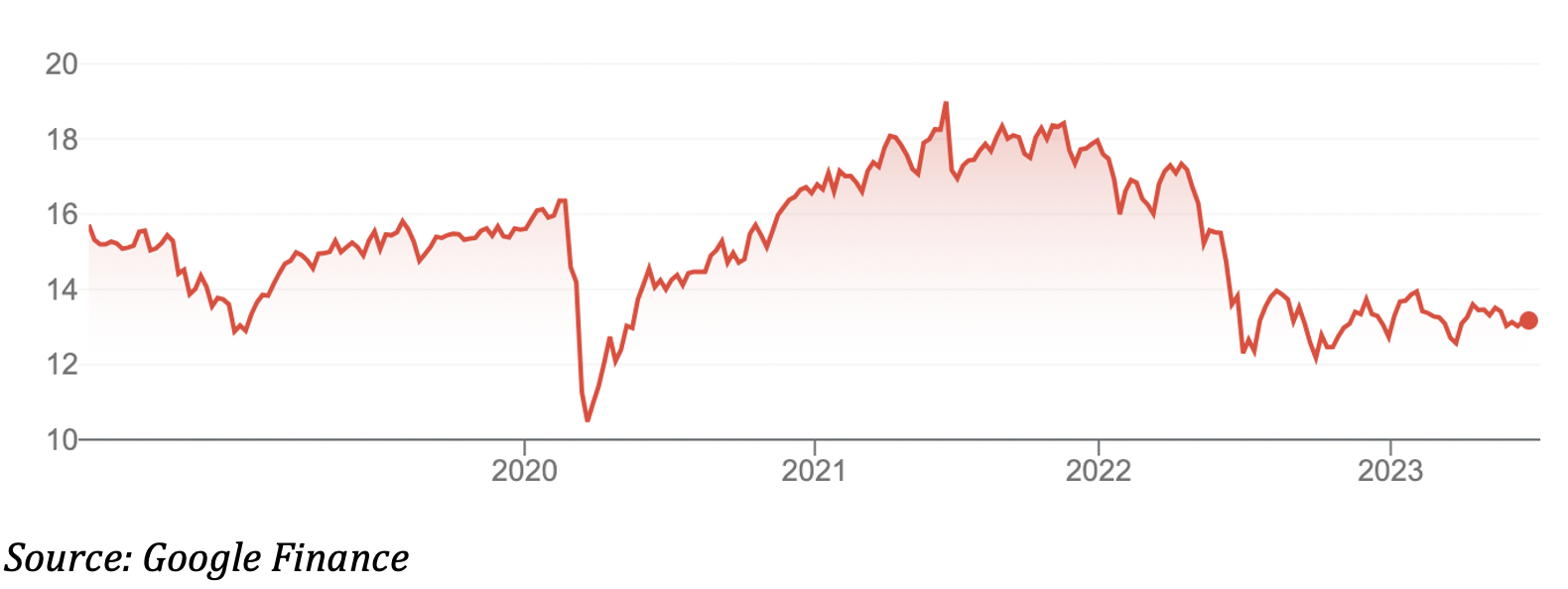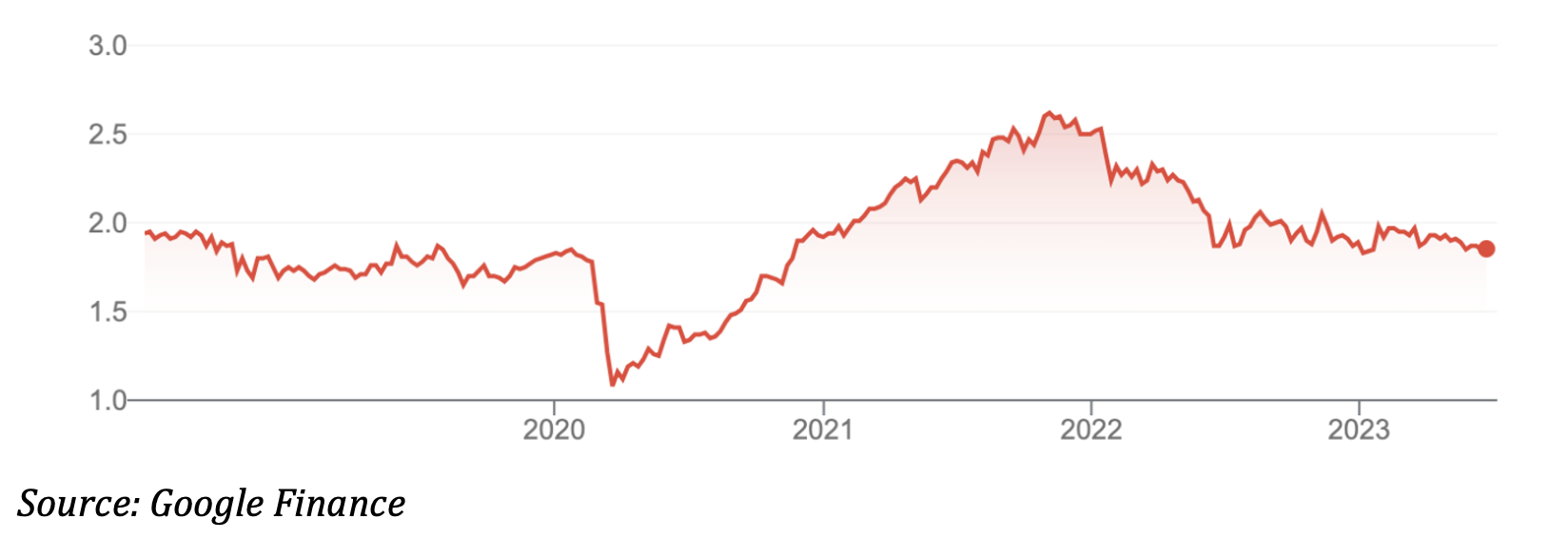Over the years, I’ve seen retail investors make two recurring mistakes.
The first is using the past as a guide to the future. A stock that falls from $5 to $1 looks cheap. The investor expects the stock to get back to $5, but it falls to 50 cents.
The second mistake is basing investment decisions on today’s news. Swayed by market noise, the investor buys more stock when economic news is bullish and sentiment is positive. Then, sells stocks after the market becomes gloomy.
Nobody makes money by following the herd or by standing on the same side of the ship as everybody else. Contrarian investing requires independent thinking, patience and high conviction. Going against the trend should feel deeply uncomfortable at times.
I thought about these mistakes with small-cap stocks. Newspaper headlines scream doom and gloom. High inflation is likely to persist for longer than expected. Interest rates have soared and one or more rate hikes are still likely this year.
Consumers are being squeezed. Sentiment is lousy. A recession is likely, if not in a technical sense (two consecutive quarters of negative GDP growth), then almost certainly on a per-capita basis. Economic news deteriorates by the day.
That’s seemingly a terrible backdrop to buy small-cap industrial stocks. Small caps tend to be relatively more exposed to Australia’s economy than large caps, which usually have a higher proportion of offshore earnings.
Also, small-cap companies don’t have the balance-sheet strength of large companies or the same capacity to withstand downturns. Some small caps struggle to raise equity capital during market shocks or only do so through highly dilutive offerings.
I could highlight other risks for small-cap investors in this market. But the key issue is valuations – how much of the bad news is already priced in – and to look ahead.
I’ve covered small-cap stocks for over three decades. Sometimes, the best time to buy them is during recessions when bad news abounds. As newspaper headlines scream gloom, small caps edge higher, almost rallying by stealth.
On valuation, small caps are trading at their biggest discount to large-cap stocks in years, after comparing the average Price Earnings (P/E) multiple.
Care is needed with comparison. Large-cap indices have a much higher weighting of resource and bank stocks compared to small-cap indices, affecting index composition.
For at least three years, I’ve heard small-cap fund managers use this valuation gap to argue that small caps are badly undervalued. They’re right, but “markets can remain irrational for longer than you can remain solvent”, as Keynes famously said.
On my analysis, the Small Ordinaries has now underperformed the ASX 200 (on a total-return basis) over one, three, five and 10 years. I cannot recall such a long period of underperformance in small-cap Australian equities.
This column’s readers know I outlined the case for small-cap industrials in 2023 (in my last column for 2022) and nominated over a dozen small-cap ideas. I stand by that view.
Few investors pick the exact bottom or turning point of a sector or index. Small caps might go lower yet this year, but their aggregate valuation (relative to large caps) has already priced in a torrent of bad economic news – and then some!
Fast forward 12 months and I suspect we will be talking about an economy that has had a mild technical recession (or none at all) and interest-rate cuts. Inflation will be heading lower and shellshocked consumers will finally get a break.
Now is a reasonable time for long-term growth investors to add more small-cap exposure to their portfolio, preferably through an active fund (this is a stockpicker’s market). Those who prefer to gain small exposure through an index should use an Exchange Traded Fund (ETF).
Australia has some terrific small-cap fund managers who run unit trusts or Listed Investment Companies. At least half a dozen small-cap ETFs (some of them are actively managed funds) are now available via ASX.
Here are three funds to consider:
- SPDR S&P/ASX Small Ordinaries Fund (ASX: SSO)
SSO is a low-cost, easy way to add small-cap exposure to portfolios. SSO aims to track the return of the Small Ordinaries index, the benchmark index for small-cap performance and the barometer against which many small-cap funds compare performance.
The Small Ords includes stocks ranked 101 to 300 by market value. Bought and sold like a share on ASX, SSO provides instant diversification through its holding of 200 stocks.
SSO suits investors who want to increase their portfolio allocation to small-cap Australian equities, or build a position in them, without having to pick stocks or pay higher fees to invest through active small-cap funds.
SSO’s annual management fee is 0.5%, a touch below the iShares S&P/ASX Small Ordinaries ETF (ASX: ISO) at 0.55%. Those seeking even lower fees could consider the Vanguard MSCI Australian Small Companies ETF (ASX: VSO). It costs 0.3% and invests in about 170 stocks, or 14% of the sharemarket by capitalisation.
Chart 1: SPDR S&P/ASX Small Ordinaries Fund

- Spheria Emerging Companies Ltd (ASX: SEC)
The Listed Investment Companies (LIC) market has a number of small-cap managers that are trading well below their pre-tax Net Tangible Assets (NTA).
Among the best of them is Spheria Emerging Companies, a well-regarded manager in small-cap equities. Spheria has outperformed over one, three and five years.
Since inception in 2017, SEC has returned 6.2% annually to end-May 2023), almost doubling the return of the S&P ASX Small Accumulation Index over that period.
But like many LICs in this market, SEC trades at a steep discount to NTA. Its latest pre-tax NTA of $2.218 compares to the current share price of $1.86. That’s a 16% discount to NTA for a manager that has consistently outperformed its benchmark index.
Some investors see LIC discounts as a recurring problem. Others see them as an opportunity to buy assets for less than they are worth. That looks to be the case with Spheria, which is in the out-of-favour small-cap and LIC markets.
Chart 2: Spheria Emerging Companies Ltd

- Vaughan Nelson Global Equity SMID Fund (ASX: VNGS)
VNGS is an interesting newcomer to the ASX. Launched in May 2022, VNGS invests in global mid- and small-cap companies (many of which are large by Australian standards).
The fund holds 69 stocks, of which the weighted average market capitalisation is almost $12 billion. About 61% of the fund is invested in US small and mid-caps.
VNGS’s 4.3% return since inception compares to 6% for its benchmark index, the MSCI ACWI SMID Cap Index.
Australian retail investors are badly underweight global equities (on average). With that, small caps are rarely considered for global equities exposure. There’s a huge universe of global small-cap stocks to consider and they are also trading at an unusually big discount to global large caps (in aggregate).
Vaughan Nelson, a Houston-based firm with US$14.2 billion in assets under management, has a good record and offering global small-cap exposure in this market fills a gap. VNGS is an active fund offered through an ETF structure via the ASX.
VNGS’s annual management fee of 1.12% is much higher than that for small-cap ETFs that track an index, but comes with active management across global equity markets.
Tony Featherstone is a former managing editor of BRW, Shares and Personal Investor magazines. The information in this article should not be considered personal advice. It has been prepared without considering your objectives, financial situation or needs. Before acting on information in this article consider its appropriateness and accuracy, regarding your objectives, financial situation and needs. Do further research of your own and/or seek personal financial advice from a licensed adviser before making any financial or investment decisions based on this article. All prices and analysis at June 21, 2023.

